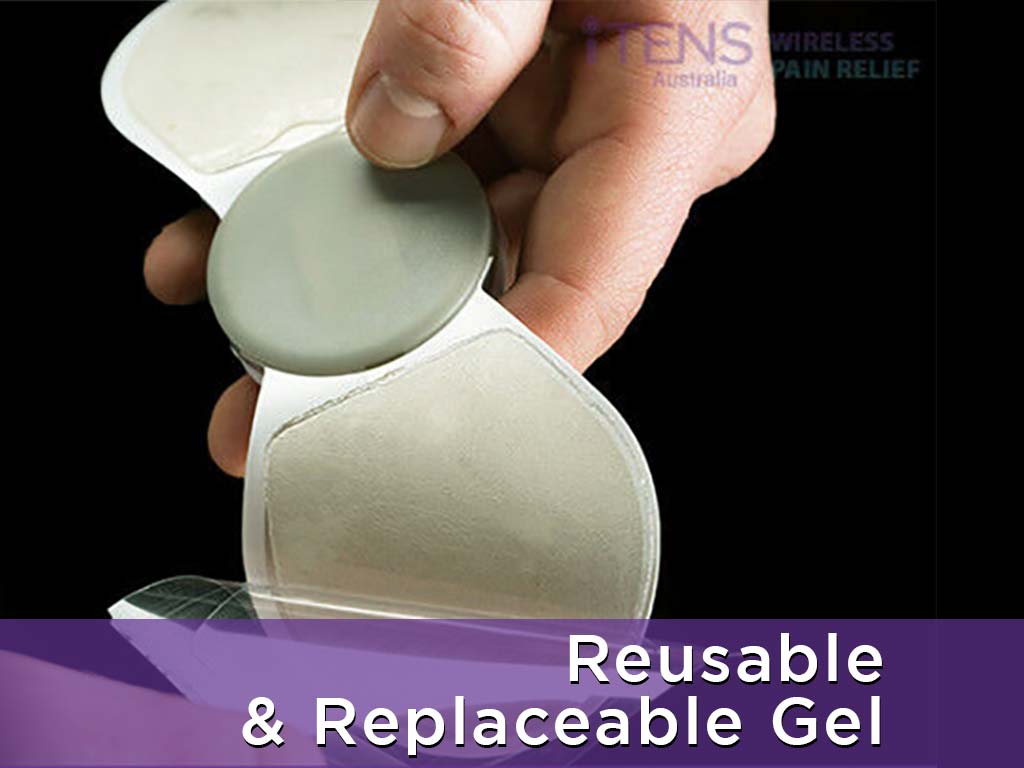
A bulging disc in the neck is a condition that occurs when a damaged disc bulges toward the disc wall. One option for pain relief is Transcutaneous Electrical Nerve Stimulation (TENS). To use a TENS unit for bulging disc in the neck, an individual must place an electrode pad near or on the pain source. For neck pain, this is two inches below the skull. Afterwards, they may adjust the settings for optimal relief.
For those with a bulging cervical disc, some feel no symptoms, but some feel severe pain, tingling, and numbness in their neck, shoulder, and arm. TENS therapy is an effective method of pain relief that uses electrical stimulation. It is safe for many people to use and can easily be self-administered. However, consulting a healthcare professional before using one is recommended. This article will present how TENS works, how to use it, and some pad placement guidelines.
How Does a TENS Unit for Bulging Disc in the Neck Work?
A bulging disc in the neck is also known as a cervical herniated disc. This occurs when a portion of the spinal disc protrudes through a tear or weak layer. It can cause pain, numbness, and weakness in the neck, shoulders, and arms. Using a TENS unit for bulging disc in the neck is an alternative treatment for pain relief.
TENS therapy alleviates a wide range of pain using its adjustable settings. Using high-frequency stimulation (50-120 Hz) triggers spinal nerve cells to block pain signals from reaching the brain. This is the mechanism described in the Gate Control Theory of Pain. It helps acute pain conditions because it takes effect immediately. Moreover, it has a massage-like effect that increases blood circulation to the area and promotes healing.
Meanwhile, low-frequency stimulation (2-10 Hz) induces the production of endorphins. These hormones are natural painkillers that build up and reduce the overall pain sensations. Many people with chronic pain conditions use this setting because its effects can last hours after the session. In addition, endorphins can improve moods and reduce inflammation.
Advantages of the Treatment
- Non-invasive: TENS therapy does not involve invasive procedures, such as injections or incisions. This removes the risks of infections and other complications.
- Drug-free: using TENS does not require the intake of oral medication. Many use it to reduce or replace their intake of pain medication.
- Portable: many TENS devices have lightweight and compact designs. This enables individuals to use it wherever they need to.
- Adjustable: individuals may customise the settings according to their comfort levels and health condition. This enables it to relieve different types of pain.
- Self-administered: people do not need medical supervision while using TENS machines. Many can use them without assistance.

How to Use a TENS Unit for Bulging Disc in the Neck
Those who wish to use a TENS unit for bulging disc in the neck must follow a few steps. It is a straightforward process that is easy to set up. However, reading the instruction manual is recommended. It can help increase understanding of how to use the machine. Moreover, washing the area before starting the session is ideal. This removes excess body oils, lotions, and dirt that may interfere with adhesion.
The user may attach the electrodes once the skin is clean and dry. Ensure the pads are properly connected to the controller by checking on the wires for handheld machines or the Bluetooth connection for wireless devices. Then, they may turn the machine on and adjust the settings. They may set a session timer to inform them when the time has passed.
TENS therapy sessions generally last between 20 to 30 minutes. Afterwards, the user may turn the machine off and remove the electrodes. It is crucial to remember that overusing the machine may lead to adverse effects. This includes skin irritation, mild burns, or even nerve and muscle damage.
Wireless Devices Offer the Best Quality of Life
Using wireless TENS machines over handheld devices offers many benefits. Firstly, they enable the user to do simple daily activities without worrying about disconnecting the electrode. Secondly, they have more advanced features, like a wider selection of treatment modes and rechargeable batteries.
Thirdly, they are easier to use for those with active lifestyles. Many wireless TENS pads allow discreet use while hidden under clothing. They also have user-friendly interfaces that increase the convenience of using TENS. Lastly, wireless machines can be more cost-efficient in the long run. This is because users do not have to replace the lead cables.

Proper Electrode Pad Placement When Using a TENS Unit for Bulging Disc in the Neck
TENS devices use electrode pads to deliver low-voltage electrical currents to the sensory nerves. This is why proper electrode placement is crucial. Many refer to placement charts to confirm which areas work best for their condition. The general rule is to apply the pads on muscle areas near or on the origin of the pain. The same is true when using a TENS unit for bulging disc in the neck.
For cervical pain, the user may place the electrode pads on the back of the neck, two inches below the skull. It is vital to avoid placing them on the head or the throat since this can cause adverse reactions. If they are also experiencing shoulder pain, they may apply the adhesives on the front and back of the shoulder. Do not place them on the joint or the chest.
Lastly, users may attach the pads on the front and back of the arm for arm pain. It is recommended to focus on one area per session to maximise the results. Furthermore, the individual must place the pads at least one inch between them to prevent electrical signal interference.
Pad Size and Shape Considerations for Increased Mobility and Flexibility
There are many options available for wired and wireless TENS pads. In particular, many wireless electrodes have specialised shapes to increase their functionality and convenience. One example of this is the wing-shaped electrodes of the iTENS.
People must select different shapes and sizes depending on the condition they wish to treat. For cervical pain, smaller pads are ideal. They provide less restriction on movement and are less likely to affect sensitive areas. People may also use them on the shoulder and the arms. There is a bonus if the pad can augment its shape to suit the body part.
Conclusion
A TENS unit for bulging disc in the neck is a possible alternative to cold and hot therapy or pain medications. It is an effective pain management method that uses electrical stimulation to reduce the perception of pain sensations. Individuals apply the pads near or on the source of the pain and then adjust the settings. High frequencies trigger spinal nerve cells to block pain signals. Meanwhile, low frequencies induce endorphin production.
It is ideal to focus on targeting one area per session to maximise the effects of treatment. For neck pain, the ideal placement is two inches underneath the skull on the back of the neck. Meanwhile, apply pads on the front and back of the shoulder for shoulder pain. Many may find wireless TENS units more convenient for self-administered treatment. Those who are interested may consider the iTENS from iTENS Australia.




















